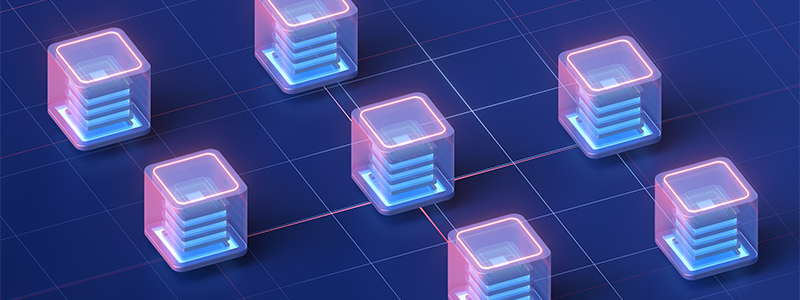Cloud is no longer a fad that only ‘trendy’ organizations opt for; rather, it has become a necessity for any business that wants better reliability, scalability, and security. According to Statista, as of 2022, 60 percent of all corporate data is stored in the cloud, up from just 30% in 2015.
While the Cloud has been in the market for some time now, the COVID-19 pandemic has catalyzed its adoption. The uncertainty brought forth by the global health crisis convinced the business world of the cloud’s value proposition. The cloud offers excellent scalability, resilience, security, and cost savings that on-premises IT infrastructure cannot match.
Considering the success of the early adopters of the cloud, such as Netflix and Amazon, there is no doubt that other businesses are following suit.
When it comes to cloud data storage, there are a lot of options in the market, each has its pros and cons. In this blog, we have done an in-depth comparison of Object Storage vs. Block Storage, what they have to offer and when should you use them, so that you can make a better investment decision.
Object Storage
Object storage is one of the most common forms that most cloud providers offer. It stores data with meta tags and a unique identification number. Users can deeply customize metadata and create their own rules and policies for data retention, deletion, and preservation. Metadata also allows users to store a massive amount of data unstructured data without compromising accessibility.
Object storage’s scalability and flexibility make it a preferred choice for many businesses considering transitioning to the cloud, especially those needing frequent access to unstructured data.
Some common object storage examples include Amazon S3, Azure Blob Storage, and Google Cloud storage.
Benefits of Using Object Storage
Many businesses are increasingly adopting object storage for their data architecture. Here are some reasons why:
- You can retrieve unstructured data at speed.
- It offers high scalability, so you can keep adding as much data as you like.
- Since it also stores metadata, conducting analyses and retrieving files from object storage is more manageable. Moreover, the metadata is entirely customizable compared to file or object storage.
- Object storage has a scale-out nature, allowing you to expand its capacity beyond petabytes and optimize its TCO.
Block Storage
Block storage breaks down data into blocks, which are then stored across a system to improve efficiency and retrievability. Each block gets a unique identification number. Whenever a user needs data, these blocks combine again to provide the information.
With block storage, data is spread across various environments, which creates multiple paths to data and increases the retrieval rate. The only disadvantage of block storage is that there is no metadata, making it difficult to understand the context of a particular data block. Block storage is ideal for databases or applications that require service side processing, such as Java, .Net, or PHP.
Some popular block storages are AWS Elastic Block Storage, Azure Premium Storage, and Google Persistent Disks.
Benefits of Block Storage
Some businesses prefer to work with block storage as opposed to object storage. Here are some reasons why:
- Block storage is easy to modify. You only need to account for the changes in the block affected whenever there is an update in the file.
- It is ideal for applications that require high input and output performance and low latency.
- Block storage is highly reliable. Each block is stored separately, which reduces any downtime or data loss.
Object Storage vs. Block Storage: Key Differences
The choice between the two storage options is not an easy one. It is important to understand how they compare on various factors, so you can decide the type of cloud storage that best suits your needs. We have done detailed object storage vs. block storage comparison in detail and highlighted the differences between the two.
| Features |
Object Storage |
Block Storage |
| Data Storage |
Data stored in objects in a flat-file structure |
Data stored in fixed-sized blocks in a hierarchal structure |
| Scalability |
Infinitely scalable |
Limited scalability |
| Performance |
Best for large unstructured files |
Suitable for individual databases |
| Cost |
Cost-effective |
Expensive |
| Metadata |
Available |
Not Available |
Data Storage
Block Storage splits a file into separate blocks and stores them hierarchically. Each block has its place but doesn’t have any other information. Object storage, on the other hand, clumps data together in an object along with the metadata. The main difference between the two is that the block storage is easier to modify. You can account for any incremental changes without altering the entire block architecture, which is not the case in object storage.
Scalability
When it comes to scalability, Object Storage is a clear winner. While block storage is scalable, there are limitations associated with it. Since data is stored hierarchically, it becomes more complex to manage block storage as the volume of data grows. On the other hand, Object Storage has a flat structure, which makes it highly scalable. You can add nodes to increase its capacity.
Metadata
As mentioned earlier, object storage stores comprehensive metadata, making searching and retrieving data easier. Metadata also allows users to classify each data piece, leading to better analytics.
Performance
Since data is evenly divided into blocks rather than a single unit, block storage performs better than object storage. Block storage also offers very low latency compared to object storage and is, therefore, better suited for structured databases and high volumes of read and write data loads.
Cost
Block storage is more expensive than object storage as object storage follows a pay-as-you-go model, and with block storage, you must pay full price even if you are not using total capacity. For example, Amazon S3 will cost you $3 per month for 100 GB data, while Amazon EBS will cost you $10 per month for the same capacity.
Use Cases for Block Storage
Given its features, block storage is better for:
- Transactional databases: Databases that require low latency and high IOP performance such as financial or e-commerce databases.
- RAID Volumes: Block storage can be used for RAID Volumes where you combine multiple disks through mirroring to provide redundancy.
- Email servers: Block storage is often preferred to store emails due to its high performance.
Use Cases for Object Storage
There are specific use cases where object storage is a better choice, such as:
- IoT Data Management: IoT and object storage complement each other perfectly. Object storage allows easy ongoing data collection and ensures availability of large files.
- Artificial intelligence: Artificial intelligence systems require high scalability, something object storage can support.
- Healthcare: Object storage can effectively streamline all patient data from various devices.
- Backup and recovery: It can support backup and recovery since these datasets don’t have to be updated frequently.
Effortlessly ETL your Data to the cloud
The cloud storage you choose depends on your business. However, regardless of your choice, you need to complement it with an ETL tool that can efficiently transfer your data to the cloud.
Astera Centerprise is a code-free tool with powerful ETL/ELT capabilities. It supports native connectivity to various cloud storage platforms. All you need to do is drag and drop the native connectors in the data flow designer to build a data pipeline from your source to the target destination. Astera Centerprise also offers built-in transformations, automation capabilities, and extensive data quality features that make working with the cloud seamless.
Download Astera Centerprise today and get a 14-day free trial




